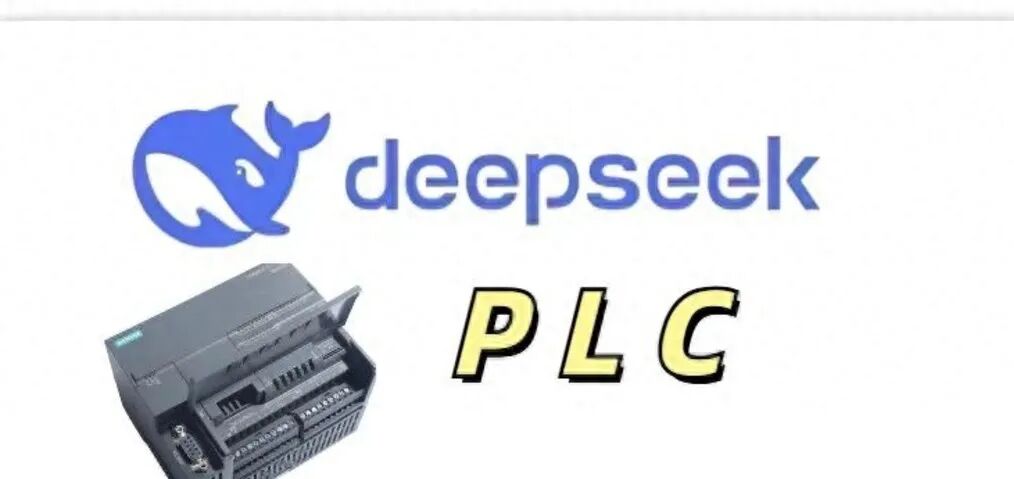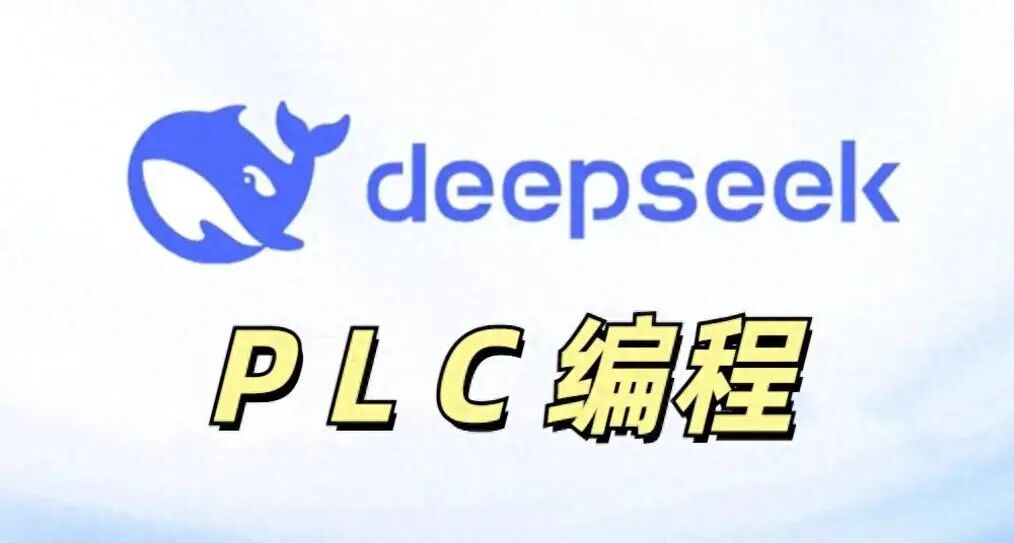
Click the blue text to follow us
Hello everyone! I am Sister Fang, and today we are going to talk about a super interesting topic: the combination of PLC (Programmable Logic Controller) and DeepSeek artificial intelligence technology in Industry 4.0.
Have you ever wondered how traditional PLC control systems can spark with AI technology in the wave of intelligence? Today, Sister Fang will use a simple and easy-to-understand case to show you the perfect collaboration between PLC and DeepSeek under Industry 4.0. After reading this article, you will learn:
- How PLC and DeepSeek collaborate
- How intelligence enhances production efficiency
- Application and implementation ideas in real cases
Alright, put on your curious hat and let’s learn together with Sister Fang!
1.
1. PLC and DeepSeek in Industry 4.0: Perfect Partners

In the era of Industry 4.0, factories are becoming increasingly “smart”.
Here, “smart” refers to more automated and intelligent production.
Traditional PLC systems excel at logical control and real-time response, but they struggle with complex data analysis and prediction.
At this point, the addition of artificial intelligence technologies like DeepSeek is like equipping the factory with a “smart brain”.
In simple terms:
- PLC is the “executor” on the production line, responsible for real-time control of mechanical equipment, such as starting, stopping, timing, and detection.
- DeepSeek is the “analyst”, responsible for analyzing and optimizing massive amounts of data, such as predicting equipment failures and optimizing production rhythms.
The combination of the two is like a pair of perfectly coordinated partners, capable of steadily completing basic operations while dynamically adjusting strategies to make production more efficient.
2.
2. Application Case: Intelligent Upgrade of Food Packaging Production Line

Next, Sister Fang will use a case of a food packaging production line to show you how PLC and DeepSeek collaborate.
1. Case Background
A certain food factory has a packaging production line that is always troubled by the following issues:
- Unstable packaging rhythm, leading to low production efficiency.
- Equipment occasionally experiences stalling or failures, but maintenance is always reactive, unable to prevent issues in advance.
- Production data cannot be fully utilized, making it impossible to effectively optimize processes.
To solve these problems, the factory decided to integrate the DeepSeek intelligent analysis module based on the existing PLC control system (Siemens S7-1500). The goals are:
- To achieve dynamic optimization of packaging rhythm.
- To improve the stability and reliability of equipment operation.
- To utilize data mining to optimize production processes.
2. Collaboration between PLC and DeepSeek
In this case, PLC and DeepSeek each play their roles to complete tasks together:
-
PLC is responsible for basic control① Control key devices on the production line, such as motors, sensors, packaging machines, etc.② Achieve real-time logical control, including starting, stopping, timing, etc.③ Collect real-time data from the production line, such as motor torque, packaging quantity, operating status, etc.
-
DeepSeek is responsible for intelligent analysis① Deeply analyze the data collected by PLC, such as equipment operating parameters, historical failure records, etc.② Predict potential failure risks of equipment and provide maintenance suggestions in advance.③ Optimize packaging rhythm through AI algorithms, dynamically adjust the operating parameters of servo motors, and reduce waiting time.
3. Implementation Ideas of the Case
(1) Hardware Configuration
The required hardware devices for this case include:
- Siemens S7-1500 PLC: Used for the underlying control of the production line.
- DeepSeek Industrial AI Edge Box: Used for data analysis and AI optimization.
- Servo Motor: Achieves precise control of the packaging machine.
- Sensor: Used for real-time detection of production status, such as completed packaging quantity, equipment status, etc.
(2) Design Process
-
Data CollectionPLC collects key data from the production line through the Profinet communication protocol, such as packaging quantity per minute, motor operating status, etc., and transmits the data to the DeepSeek box.
-
AI Analysis and OptimizationDeepSeek uses built-in algorithms to analyze historical and real-time data, identifying bottlenecks in production. For example, if it finds that a motor’s operating speed is too high, causing instability in packaging rhythm, it will provide optimization suggestions.
-
Optimization FeedbackDeepSeek sends the optimized parameters (such as motor acceleration, operating rhythm time, etc.) back to the PLC via the Modbus TCP protocol, and the PLC dynamically adjusts the production process based on the new parameters to achieve efficiency improvement.
4. Results and Benefits

Through this intelligent upgrade, the factory’s production efficiency increased by over 10%, and the equipment failure rate decreased by 20%. More importantly, the factory began to utilize data for decision-making, rather than solving problems reactively as before.
3.
3. Debugging and Precautions

In actual implementation, debugging is a very important step. Sister Fang has compiled some common problems and solutions for you:
1. Communication Issues
- Problem: Intermittent communication between PLC and DeepSeek box.
- Solution: Check the Profinet or Modbus TCP communication configuration to ensure data block addresses are consistent.
2. Data Delay
- Problem: There is a delay when DeepSeek sends optimized parameters back to PLC.
- Solution: Try to complete real-time optimization through edge computing to reduce the steps of uploading data to the cloud.
3. Incorrect Parameter Settings
- Problem: AI optimization parameters do not meet production needs, leading to abnormal rhythms.
- Solution: During initial debugging, strictly check whether the input parameters of the optimization model are accurate and ensure data backup.
4.
4. Application Expansion: More Scenarios of Possibility

In addition to food packaging, this “PLC + DeepSeek” intelligent solution can also be applied in the following scenarios:
- Automobile Manufacturing: Optimize the action rhythm of robotic arms to improve assembly efficiency.
- Chemical Production: Predict equipment failures to reduce safety risks.
- Logistics Sorting: Dynamically adjust the operating strategies of sorting machines to enhance sorting speed.
As long as there is data and control needs, this solution can be applied to almost any industrial scenario.
5.
5. Summary and Encouragement

Today, through a case of a food packaging production line, we learned about the combination of PLC and DeepSeek in Industry 4.0, and I hope you have gained a more intuitive understanding of this technology. Instead of worrying that AI technology will replace traditional PLC, it is better to learn how to combine the two, making yourself a versatile talent in the field of industrial automation!
Sister Fang believes that as long as you are willing to practice, you will definitely find your place in this era full of opportunities. If you have any questions about the content of the article or want to know more cases, feel free to leave a message to me! See you next time~
Keep it up, the future of industrial automation belongs to you! 🌟Alright, Sister Fang will continue to share more related content to help you deeply understand the application of PLC and DeepSeek!
6.
6. How to Further Learn and Improve Skills?

As a learner or practitioner in industrial automation, you may feel a bit lost when facing the combination of technology and AI. Not sure where to start learning? No worries, Sister Fang has planned a clear learning path for you to avoid detours:
1. Consolidate PLC Basics
Mastering the basic knowledge of PLC is the starting point for all industrial automation learning. Here are the key points:
- Mainstream PLC Brands: Such as Siemens, Mitsubishi, Omron, etc. It is recommended to start with simple models (like S7-1200) to familiarize yourself with their hardware configuration and programming environment.
- Ladder Diagram Programming: This is the most commonly used programming language for PLC, with clear logic and easy understanding.
You can practice through actual cases, such as controlling a light switch or implementing a simple timer function. * Basic Control Functions: Master the configuration of input/output modules, learn to implement logical control, sequential control, and timing control.
2. Learn Industrial Communication Protocols
The combination of PLC and DeepSeek relies on industrial communication protocols, so knowledge of communication is very important:
- Profinet: A communication protocol commonly used by Siemens PLC for real-time data transmission.
- Modbus TCP: A universal industrial communication protocol used for cross-device data exchange.
- OPC-UA: A commonly used data standardization protocol in Industry 4.0, suitable for understanding cloud data integration.
After understanding these protocols, you will find that data transmission and collaboration between devices are not complicated; you just need to configure the addresses and data blocks correctly.
3. Learn Artificial Intelligence Related Knowledge
AI may seem very advanced, but it is not that difficult; just grasp the key points:
- Basic Data Analysis: Learn to use tools (like Excel or Python) to analyze production data, such as identifying “bottlenecks” in equipment operation.
- Basic Principles of AI Models: The core of DeepSeek is machine learning models. It is recommended to learn some basic knowledge, such as regression analysis, classification algorithms, and even simple neural networks.
- Using Industrial AI Tools: Tools like DeepSeek have already packaged complex algorithm logic; you just need to input requirements and upload data to get results.
The key is to learn how to use the tools, not the details of the algorithms.

4. Hands-on Practice and Project Accumulation
Learning any knowledge is inseparable from practice. Sister Fang suggests starting with the following small projects:
- Small Automation Control Project: For example, use PLC to control a small conveyor belt, achieving automatic start, stop, counting, etc.
- Data Collection and Analysis Project: Use PLC to collect equipment operation data, analyze data patterns using Python or Excel, and lay a foundation for DeepSeek’s AI optimization.
- AI-assisted Optimization Project: Try using DeepSeek or similar AI tools to optimize a small production line, such as adjusting conveyor belt speed or packaging machine rhythm.
Through these projects, you can not only consolidate your basic knowledge but also truly understand the practical value of combining PLC and AI.
7.
7. How to Avoid Common Pitfalls in Learning?

When learning the combination of PLC and AI, many people easily fall into some “pits”. Sister Fang is here to help you avoid these troubles:
1. Only Learn “Theory” Without Hands-on Practice
Many people like to read tutorials and memorize concepts but are unwilling to work on projects. In fact, industrial automation is a very practice-oriented field, and only through actual operation can one truly understand the application of control logic and AI algorithms.
Sister Fang suggests: Set a small project, such as using PLC to control a simple robotic arm, and apply the knowledge you have learned step by step.
2. Neglecting Communication and Data Learning
The core of the combination of PLC and AI lies in data flow. If you do not understand communication protocols and data processing methods, it will be difficult to achieve synergy between the two.
Sister Fang suggests: Spend more time learning common protocols like Profinet and Modbus TCP, and practice using simulation tools (like the simulation function of TIA Portal).
3. Fear of AI Technology
Some people think AI and machine learning are too complex and are afraid to learn deeply. In fact, tools like DeepSeek have simplified complex algorithms; the focus is on understanding their functions and application scenarios.
Sister Fang suggests: Start with simple AI concepts, such as analyzing a set of data to find patterns. Then try using AI tools to solve specific problems, such as predicting equipment failures or optimizing production rhythms.
8.
8. Future Career Development Directions

With the combination of PLC and DeepSeek, many new career opportunities have emerged in the field of industrial automation. Sister Fang lists a few popular directions for you:
1. Intelligent Control Engineer
This role requires knowledge of PLC control logic and basic principles of AI technology. You need to be able to integrate AI algorithms with automation control systems, such as using DeepSeek to optimize production rhythms and reduce energy consumption.
2. Industrial Data Analyst
With the development of Industry 4.0, more and more factories are beginning to value data collection and analysis. The task of an industrial data analyst is to mine the value from data, such as predicting equipment failures and optimizing production processes.
3. AI-PLC System Integration Engineer
This profession focuses on the integration of AI systems with traditional PLC systems, such as optimizing PLC control parameters through DeepSeek to achieve more efficient production.
The common point of these new professions is the need for composite skills, understanding both traditional PLC control and AI technology and data analysis. Sister Fang encourages everyone to continue learning and constantly expand their knowledge boundaries!
9.
9. Summary and Small Tasks

In today’s article, Sister Fang took you to understand the application of the combination of PLC and DeepSeek in Industry 4.0, including their technical division of labor, practical cases, learning paths, and career development directions. I hope that through this content, you can be full of confidence in the future of industrial automation!
Small Tasks:
- Try to design a simple control process, such as using PLC to control a light’s timed switch.
- Think about how to optimize this process through data, such as analyzing the frequency of the light’s switch and calculating energy-saving effects.
- If possible, learn about DeepSeek or similar AI tools to see what optimizations they can bring to your process.
Sister Fang’s Message: Learning PLC and industrial AI technology is like climbing a mountain. Although it may be a bit tiring at first, once you master the skills and stand at the top, you will find it all worthwhile.
Remember, Sister Fang will always be your little partner on your learning journey!
If you have any questions, feel free to leave a message or ask. See you next time~
Keep it up! The future of Industry 4.0 belongs to every diligent learner and brave practitioner like you! 🌟

Click it, share, like, and see it all here